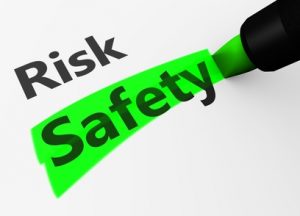Scaffolding is used in the construction of the majority of new-build homes and commercial buildings, and in the majority of structural repairs which are carried out on these buildings. Because scaffolding is used so often across the globe and the UK, it is possible that accidents can occur on or around scaffolding. However, the majority of scaffolding accidents are preventable.
If you have suffered a scaffolding related injury which you believe could have been prevented, then you should speak to a solicitor who specialises in scaffolding accident claims. The majority of these claims relate to the fact that scaffolding owners and erectors have failed to adhere to health and safety regulations sufficiently which have been put into place to help to protect employees and the general public from accidents which could easily occur otherwise.
Here is some information about a few of the responsibilities of scaffolding owners and users. If you think that a failure to adhere to these responsibilities may have contributed to your injury, then you may be able to make scaffolding accident claims.
Scaffolding Risk Assessment
Before any scaffolding is erected, a proper risk assessment should be conducted by a trained expert. This risk assessment should consider a range of different things, including whether the ground  is suitable to put scaffolding on. In some cases, extra precautions will need to be taken if the ground is uneven or soft. They will also need to consider how the scaffolding may affect members of the public.
is suitable to put scaffolding on. In some cases, extra precautions will need to be taken if the ground is uneven or soft. They will also need to consider how the scaffolding may affect members of the public.
If the scaffolding is on a pavement, they may need to put padding on the poles and certainly hazard tape should be fitted to protect people who may otherwise walk into it, or if the scaffolding is in a private area, they should consider how to prevent people from accidentally (or purposefully) coming onto the site when they shouldn’t. If a risk assessment is not carried out, it is harder to identify these risks, and accidents may happen. These accidents could give rise to scaffolding accident claims.
Scaffold Equipment Maintenance
The owner of the scaffolding needs to make sure that all of the equipment which is used is properly maintained, from the scaffolding poles down to the clamps which connect the scaffolding back together. Poorly maintained scaffolding can bend and break easily, which can lead to serious accidents including scaffolding collapse. Poorly maintained equipment can also cause cuts and lacerations; if the equipment is rusty, this can lead to serious infections.
To avoid successful scaffolding accident claims, owners must be able to show that they have properly maintained their equipment, and replaced any equipment which did not meet a minimum standard. Many responsible scaffolding owners will be sure to document their maintenance checks so that they can prove what has been done.
Scaffolder Training
Scaffolding should only be used by trained professionals. If you have been asked to work with scaffolding, but you have not been properly trained on how to use it, then you may be putting yourself or others at risk. This includes erecting scaffolding, and being asked to work up on the scaffolding. You may suffer an accident because you are not properly trained, or you may experience an accident because someone who is working on the scaffolding has not had sufficient training. When making scaffolding accident claims, it does not matter whether the accident was “technically” your fault, so long as it is possible to show that you made the mistake because you did not have sufficient training.
Personal Protective Equipment
Anyone who is working around scaffolding is expected to wear certain pieces of personal protective equipment. In many cases, this will include high visibility jackets and hard hats. High visibility jackets help to make you more noticeable on site, whilst hard hats can help to lessen the effects of impact if you are hit on the head.
People who work around scaffolding on a full time basis should not be expected to buy their own personal protective equipment, because they should be given it by their employer. If you have not been given the correct personal protective equipment by your employer, then they may be liable for any injuries that you suffer as a result of not being adequately protected. If you are visiting a building site, then you should be given any necessary protective equipment before you enter the scaffolding area.
